
植物を移動した後は、こんな風です。

空っぽになったベランダを見て、びっくりしました。ベランダの二百種類くらいの植物が東京の家族の小さな庭に移転されました。パートナーがこの写真を取って、Say Hi というサイトに載せました。ビルメンテナンスのために、二ヶ月以上、家に庭がありません。
It’s a shock for me, too, to see this photo of my empty balcony. The 200 or so plants on my Tokyo mid-rise balcony have been relocated to my in-laws’ small garden.
Our building is undergoing a two and a half month exterior renovation to patch cracks, replace drainage pipes, and otherwise maintain this 40 year old building. My spouse Shu Kuge took this photo and posted it to Say Hi.
In the garden’s absence, I’ll be focusing more on photos and stories about my neighborhood and Tokyo. Next up is a blog series documenting the demolition of two neighboring homes near my apartment.
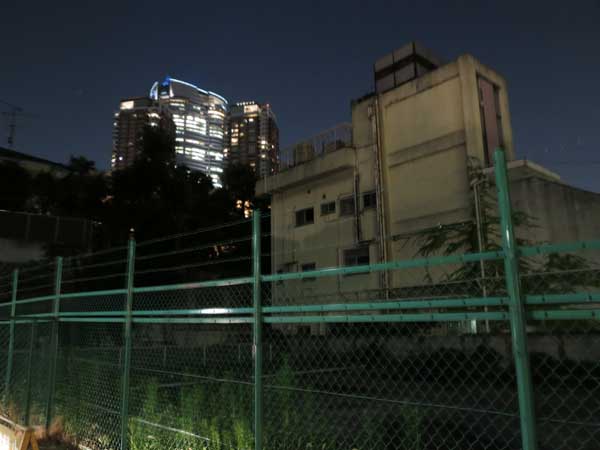
六本木ヒルズの後ろに、まだ古い工場や昭和時代の住居が残っています。
In the shadow of Roppongi Hills, one of Tokyo’s most expensive neighborhoods, there are still old factory buildings, Showa-era two story houses, and even empty lots alive with weeds. This mix of scale, land usage, and non-design is delightful.
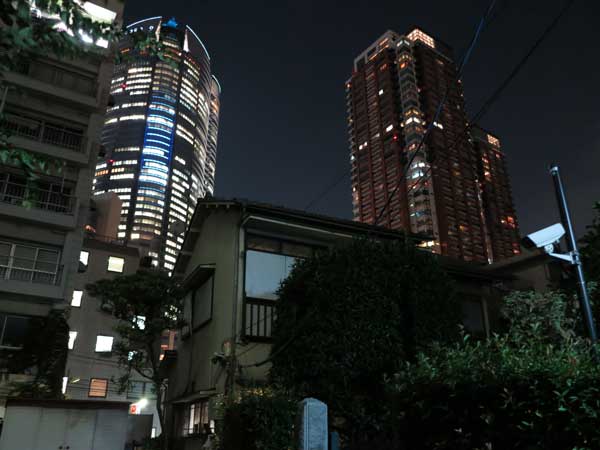


東京に、使われていないところはすぐにコインパーキングになります。この中野の空き地は、成長した木やアートや雑草でにぎやかです。
Most unused land in Tokyo quickly becomes automated coin parking for automobiles. I like this empty lot with a mature tree, art work, and amazing collection of weeds.

皇居の前に、黒松がたくさんあって、芝生は広いです。空っぽな感じがします。こんなに完璧な芝生を見ると、使われている有害な農薬のことを考えてしまいます。活気のない印象があります。
On the East Side of the Imperial Palace, there are hundreds of black pine trees in a vast field of lawn. Although the surrounding streets are full of cars, there’s an eery silence and emptiness in the park. Maybe it’s also the perfect quality of the lawn that also strikes me as life-less and full of harmful chemicals.
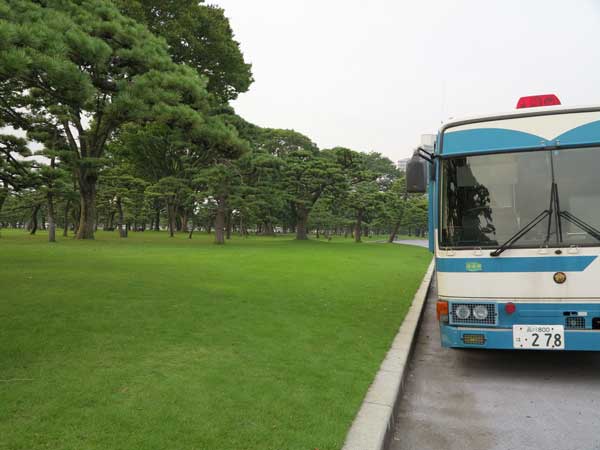
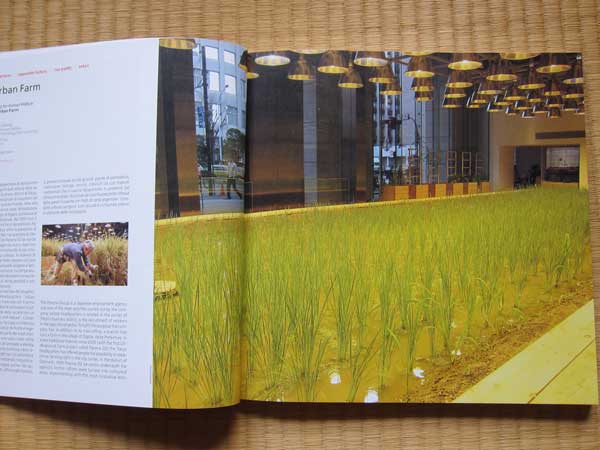
「Lotus』というイタリアの雑誌に私の東京の農園の写真が二つでました。パソナのロビーの田んぼと銀座農園の空き地の田んぼの写真が選ばれました。「Lotus』には素敵な建築のプロジェクットがたくさんのっています。四角いかたちです。もっと東京のグリーンスペースを雑誌に紹介したいです。
Lotus Editorial kindly sent me a copy of Lotus 149, titled Lotus in the Field, which explores the relations with the countryside. Lotus is a beautifully designed, Italian-English bilingual architecture quarterly from Milan.
Lotus 149 includes two of my urban agriculture photographs: one of Pasona’s corporate lobby rice field, the other an outdoor, temporary rice field in Ginza that took advantage of an empty lot between demolition and new construction.
I was happy to see that my Pasona photograph extends into a second page, and I like how the image shows a more ambivalent side of the project than the text and photos provided by the architects and corporation. Especially with the post-3.11 energy shortages after the nuke plants have been suspended, creating a show garden with grow lights looks less than utopian.
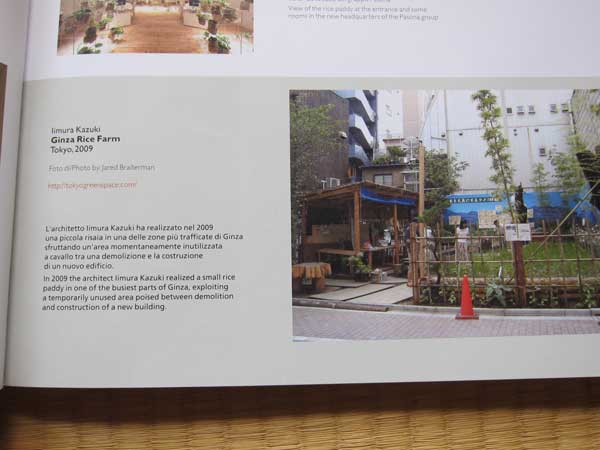
You can see the original 2009 and 2010 posts on Tokyo Green Space that inspired Lotus 149: about Pasona, and about Ginza Farm.
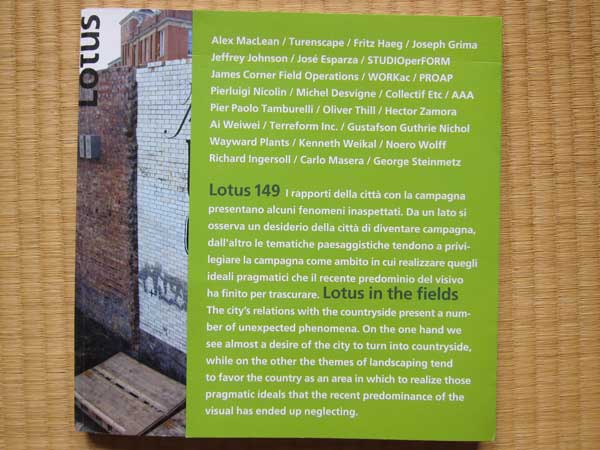

雑草の空き地はめずらしいです。杉並区で見つけた、とてもきれいなところです。
It’s rare to see an empty lot full of weeds. In Suginami ward, this is a very pretty place.

I like how this flower and plant shop occupies this empty lot on a Shibaura side street. It’s also nice to see that others use their bikes for plant shopping.

This small post-war house has survived Tokyo’s constant re-development. I wonder how long the large empty lot in the foreground has stood empty.

都市とゼロックスという写真のワークショップに参加しました。たくさん勉強になって、楽しかったです。@TaroHirano77 や @VACANTbyNOIDEA や @toomuchmagazine や @sk8linus にありがとうございます。
I was fortunate to attend a photography workshop last week with the theme of Cities and Xerox. The event gathered about twenty Japanese creatives– including a sound engineer, high school art teacher, students, guidebook writer, book editor, lawyer, and salaryman– and together we created giant photographs layered together.
The workshop process was simple yet very fun. We were asked to take photographs on our way to the workshop. Then we each chose our best photographs for three topics: breakfast, landscapes, and people. The photographs were sent to FedEx Kinko to be blown up into various sizes. And then we worked together to layer them and staple them to a wood board, which would allow art center visitors to browse the images. While we waited for the photographs to be printed and biked back to the workshop, we also silkscreened t-shirts with the word “XEROXed.”
It’s great to see other people’s photographs and see how they view Tokyo. I was particularly struck by the breakfast images: everything from a traditional Japanese breakfast (many courses, including fish, rice, miso soup, pickles, etc) to a Denny’s, coffee, and those odd, squeezable jelly drinks in foil that are popular in Japan yet seem more suited to outer space. I was the only foreigner, but felt very welcomed by the organizers and participants.
The workshop was led by accomplished photographer Hirano Taro, who became famous for taking photographs of empty pools in California used by skateboarders. The workshop took place at Vacant art space in Harajuku as part of a series of Romantic Geography events created by Too Much Magazine’s Tsujimura Yoshi.
You can see our photographs through May 22 at Vacant. There are also coffee and beeswax events coming up. I had a fantastic time, and was very impressed with how accessible, fun and collaborative this event was.




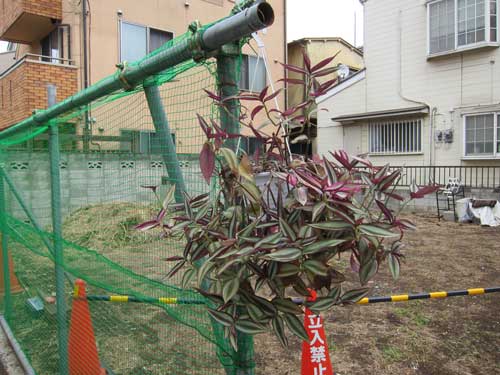
I like how someone has hung this simple plant, commonly called “wandering Jew” in the United States, on the fence in front of this empty lot. The lot has been empty for at least two years, a long time between demolition and reconstruction. The fence occasionally changes, but it was especially nice to see some plant decoration.
In the context shot below, you can also see that someone planted a simple hedge on the right side. My guess is that both of these plant interventions– one in the ground, the other secured by a simple S-hook– were created by neighbors who are getting tired of seeing the empty lot and its weeds. I admire this anonymous, small contribution to the neighborhood.
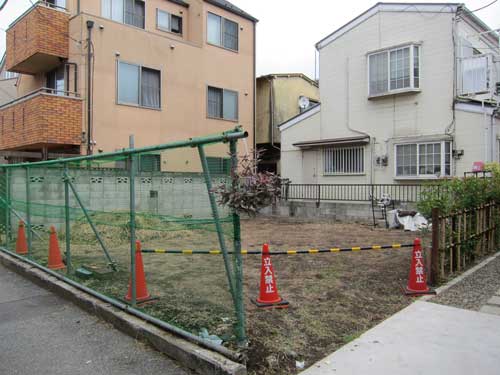


Tokyo is full of empty lots that mark the time between demolition and building. Sometimes they stay empty for more than a year. Most are turned into automated parking lots, some so small they only provide space for a single car. Some in busier neighborhoods get covered in gravel and host crepe shops in a trailer.
The empty lot above, just off Omotesando in Aoyama has three uses: tapioca drinks for sale, vending machines, and ashtrays for smokers. Considering the proximity to so much high-end shopping and so many people, it seems like a vastly under-utilized urban space.
It would be cool to see something more useful in these temporary spaces: energy generators, plants for shade and habitat, edible gardens, nurseries to grow and sell plants, attractive places for relaxation, socializing, and pets. Their design would need to be portable, modular, and generate some minimal income for the owner. Creating a prototype space for these liminal spaces would be a great project for a local government, corporation, or non-traditional marketing company.

Cool San Francisco project to turn an empty downtown development site into a temporary California wildflower meadow and pollinator garden that will attract butterflies, hummingbirds, bees, and other pollinators. The two organizers are Rebar, a public space arts group, and Pollinator Partnership, which aims to make city and farm ecosystems hospitable to pollinating species.